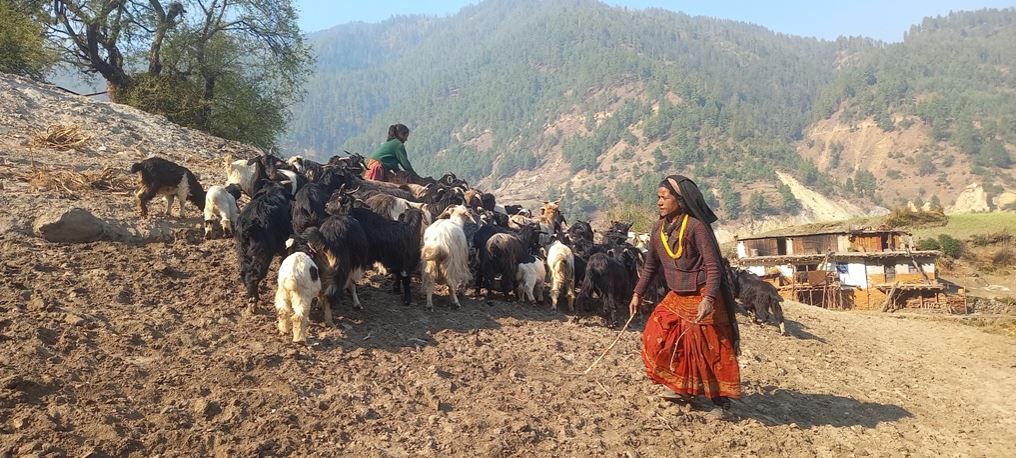- Monday, 7 April 2025
Letting sheep run on fields to boost millet yield
By Our Correspondent,Mugu, Apr. 7: As April begins, farmers in the rural areas of Mugu district have started letting sheep and goats run across their fields where finger millet has been sown. This traditional practice is believed to improve crop yields.
After the rice imported from outside the district, millet (Kodo) is the most consumed food crop in this Himalayan region. According to farmer Devilal Bhyal from Chhayanath Rara Municipality–20, in this mountainous district, millet is sown towards the end of April when the land is less fertile, and typically matures by November. Millet is considered a winter crop in this region, planted during the dry season, just after the sowing of paddy concludes.
He shared that women tend to be more involved than men in millet cultivation. Due to limited employment opportunities in the village, many men have migrated to India for work, which has increased the involvement of women in farming activities. From early morning to evening, the millet seeds are sown, and two days later, sheep and goats are run over the fields to press the soil, which is believed to support better production, said local farmer Rupkala Bohora from Chhayanath Rara Municipality–6.
She explained that letting livestock trample the millet field is a locally established method to enhance crop growth.
Since April marks the prime season for millet farming in this Himalayan district, yields tend to be lower if sowing is delayed beyond this period. According to Bohora, local women spend days and nights clearing stones, loosening soil, and applying compost manure to prepare the fields for planting.
Due to the dominance of sloped, rocky, and water-scarce land in the district, farmers here prefer millet cultivation, according to the Agriculture Development Office in Mugu. As per the office, by the end of April, around 50 per cent of cultivable land in the district is already sown with millet.
Ganesh Adhikari, an official at the Agriculture Development Office, mentioned that roughly 2,000 hectares of land in Mugu is planted with millet each season, producing over 3,500 metric tonnes of crop annually.
According to experts, millet contains 3.7 times more iron than maize, 2.3 times more than barley, and 1.5 times more than wheat. Known as Maruwa in Magar communities, Nepali Hueni in Newari, millet is rich in protein, vitamins, and essential minerals. Health professionals recommend it not only for healthy individuals but also for children, pregnant women, and patients suffering from diabetes and high blood pressure due to its nutritional value.
Despite limited production of rice and wheat in this high-altitude district, millet has long been a staple food for the people of Mugu, both as a means to fill their stomachs and as a rich source of nutrients. Local leader Arjun Rawal stated that millet is not only vital for food security but should also be promoted as a commercial crop. He further urged the provincial and local governments to provide transport subsidies to help bring organic millet to markets in urban areas.





-square-thumb.jpg)











